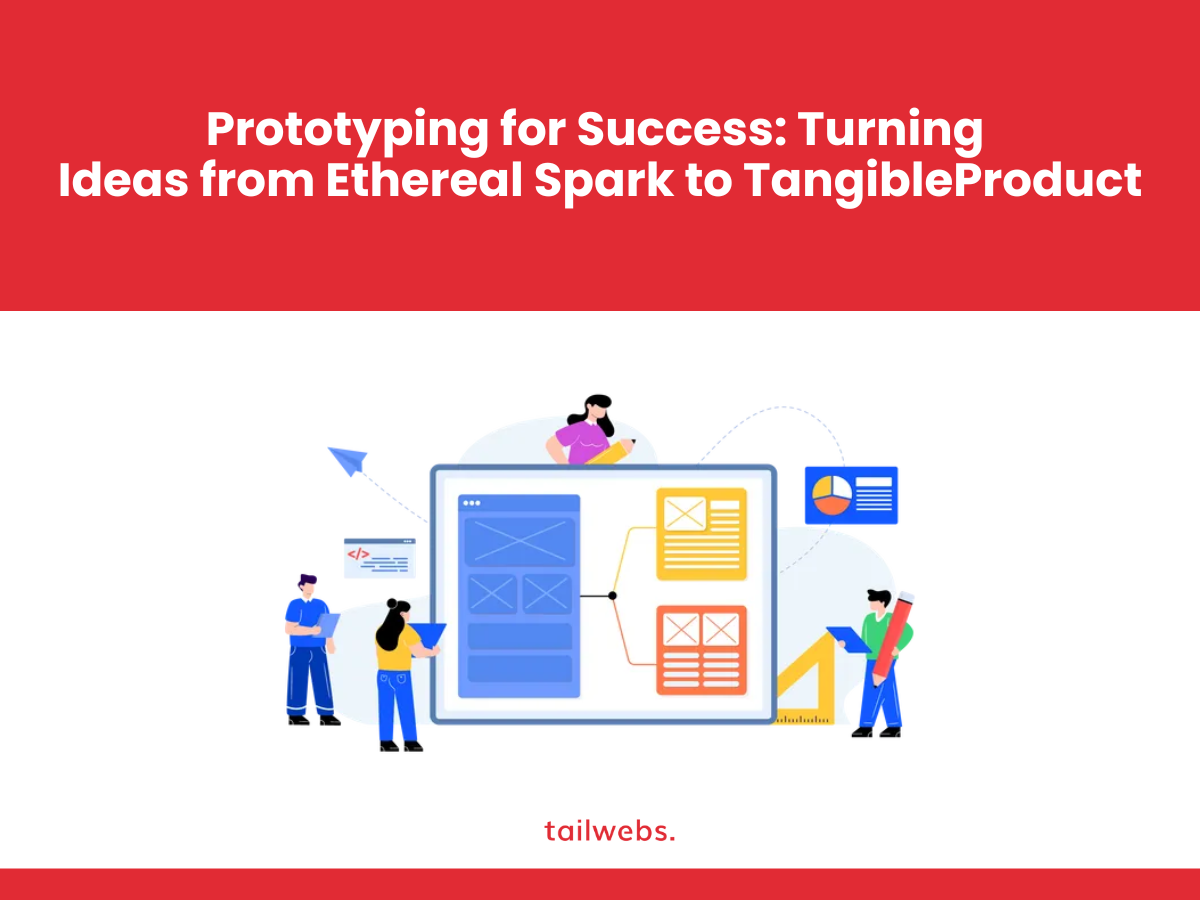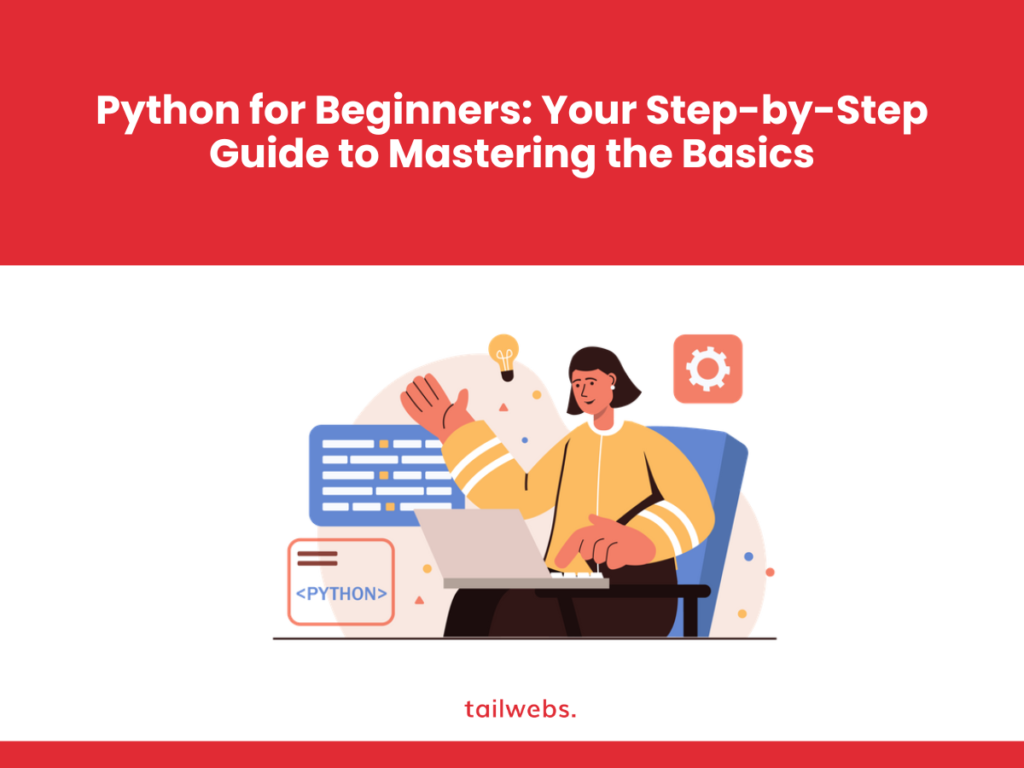Ah, the prototype – that tangible manifestation of an intangible dream. It’s the bridge between the misty realm of ideas and the bustling cityscape of real-world products. It’s where scribbles on a napkin transform into testable, iterated forms, paving the path to success. But navigating the prototyping process can feel like scaling Mount Product More in flip-flops – daunting, unpredictable, and potentially treacherous. Fear not, intrepid innovators! This blog is your sherpa, ready to guide you through the prototyping wilderness and onto the summit of product perfection.
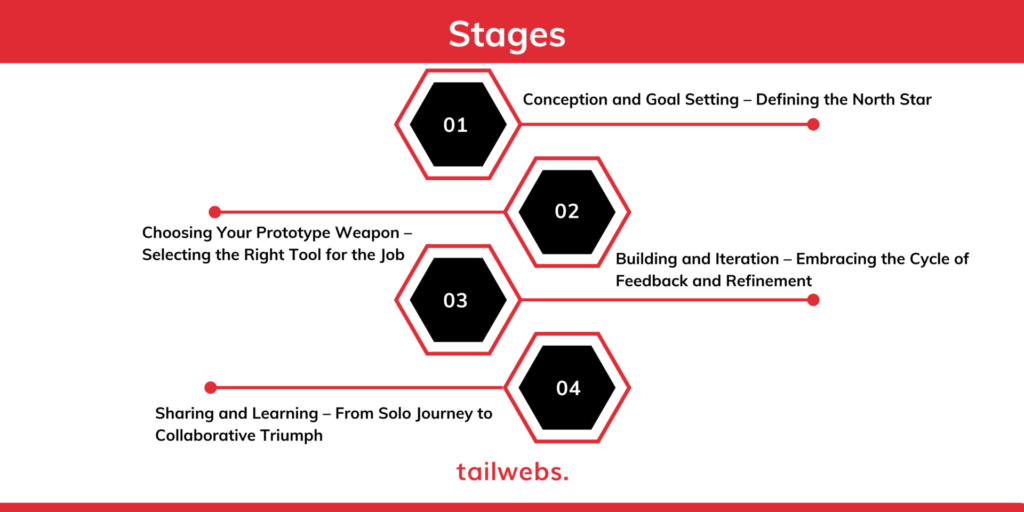
Stage 1: Conception and Goal Setting – Defining the North Star
Before sculpting clay or firing up CAD software, take a moment to define your north star. What problem does your product solve? Who will use it? What are your ultimate goals for this prototype?
Identify your target audience:
Understanding your users’ needs and preferences is crucial. Conduct market research, user interviews, and competitor analysis to paint a vivid picture of your ideal customer.
Define your success metrics:
How will you measure the effectiveness of your prototype? Be specific, measurable, achievable, relevant, and time-bound (SMART) with your goals. Are you aiming for user engagement, feature validation, or feedback on specific functionalities?
Prioritise features:
Don’t try to cram everything into a single prototype. Focus on the core functionalities that address your main objectives and provide the most valuable learning opportunities.
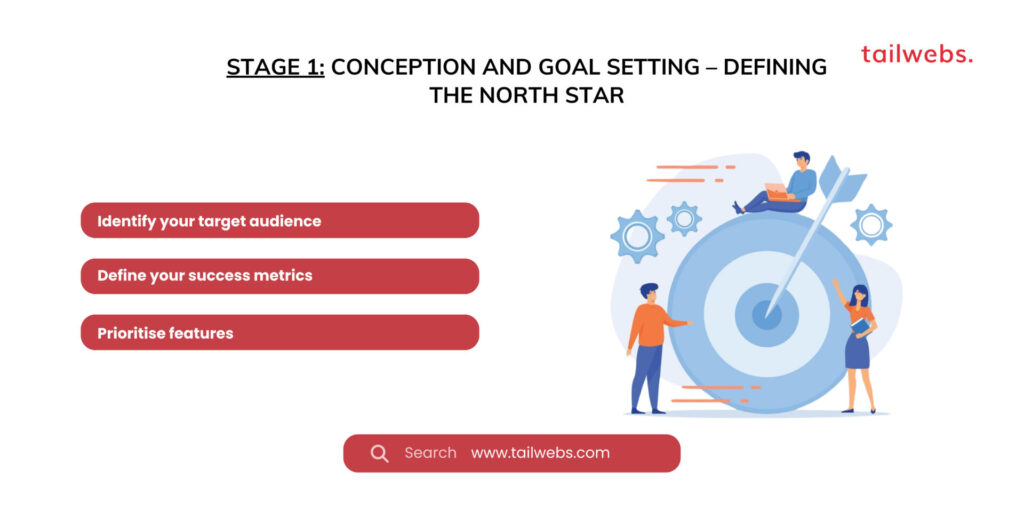
Stage 2: Choosing Your Prototype Weapon – Selecting the Right Tool for the Job
Just as a sculptor wouldn’t use a jackhammer, the choice of your prototyping tool depends on your purpose and resources. Here’s a quick arsenal of options:
Low-fidelity:
Paper sketches, wireframes, mockups – these quick-and-dirty prototypes are perfect for rapidly iterating on ideas and getting early user feedback. Tools like Figma, Miro, and even good old-fashioned pen and paper are your allies here.
Medium-fidelity:
Clickable prototypes, storyboards, interactive mockups – these prototypes add a layer of realism, allowing users to interact with the basic functionalities and providing deeper insights into usability and user flow. Tools like Adobe XD, InVision, and Framer come in handy.
High-fidelity:
Functional prototypes, beta versions – these prototypes closely resemble the final product, offering realistic testing of features and user experience. Development tools like Unity, SketchUp, and even basic coding skills can be your trusted companions.
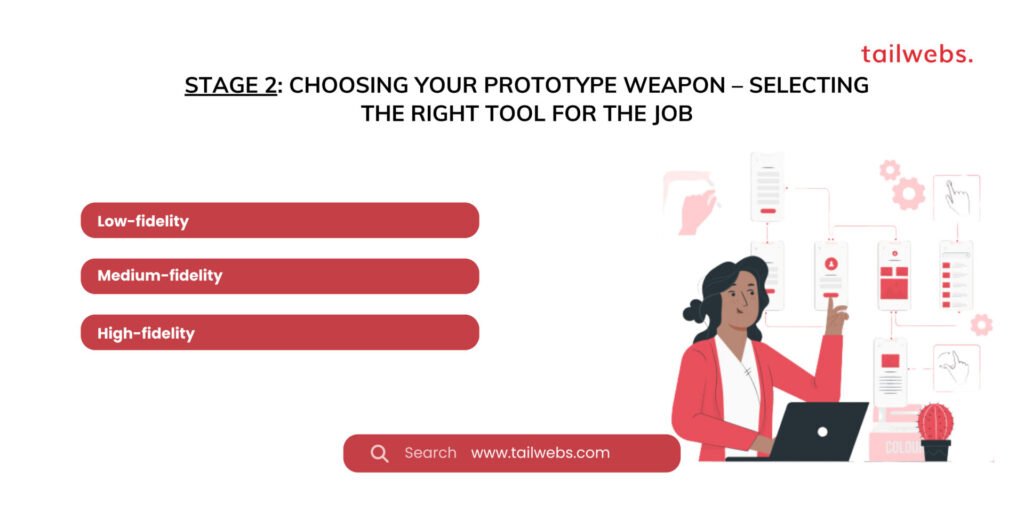
Stage 3: Building and Iteration – Embracing the Cycle of Feedback and Refinement
Remember, the first prototype is rarely the final masterpiece. Embrace the iterative cycle of building, testing, and refining. Collect feedback from users, analyse data, and use these insights to constantly improve your prototype.
Conduct user testing:
Observe users interacting with your prototype, recording their reactions and comments. Don’t be afraid of criticism – it’s gold for identifying pain points and improving your product.
Analyse data:
Track user behaviour through clicks, scrolls, and interactions. Tools like Google Analytics and Hotjar can provide valuable insights into user paths and identify areas for improvement.
Iterate and refine:
Don’t be afraid to scrap and rebuild. The beauty of prototyping is its flexibility. Use the feedback and data to refine your prototype, adding polish and functionality with each iteration.
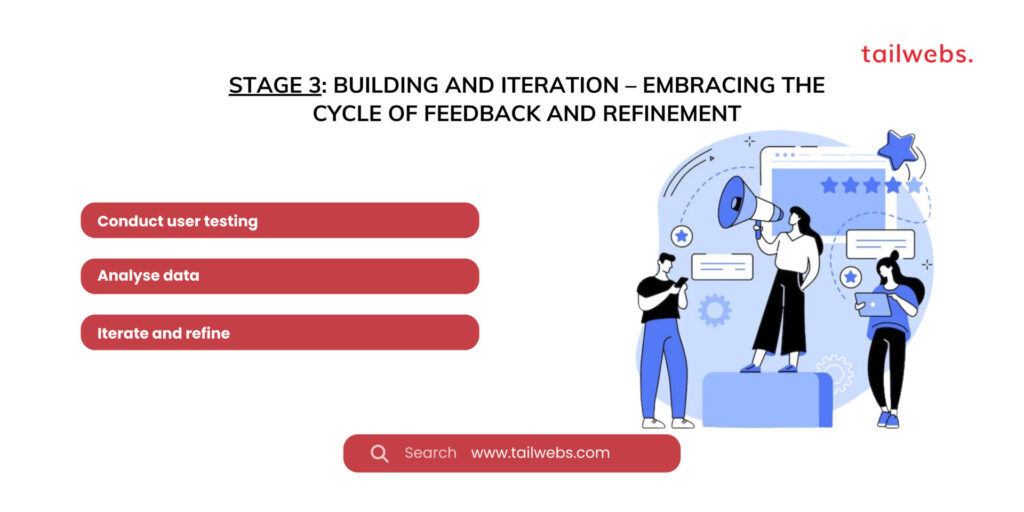
Stage 4: Sharing and Learning – From Solo Journey to Collaborative Triumph
Prototyping isn’t a solo adventure. Share your prototype with colleagues, mentors, and potential investors. Their feedback can be invaluable in refining your product and catching blind spots.
Gather stakeholder feedback:
Share your prototype with your team, investors, and potential customers. Their diverse perspectives can provide valuable insights and ensure your product aligns with all stakeholder needs.
Build a community:
Share your journey on social media, online forums, and product communities. Engaging with other creators and innovators can spark new ideas, provide support, and help you learn from their experiences.
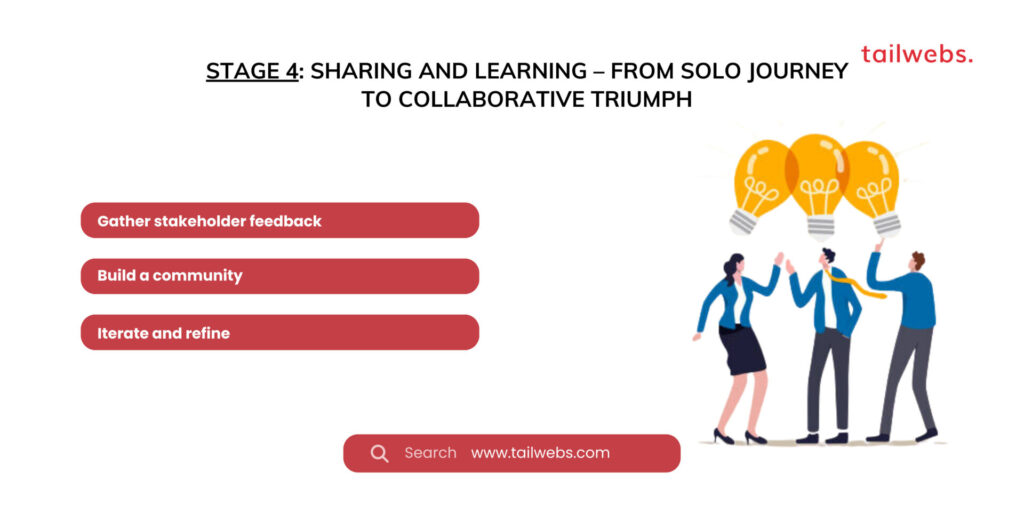
Statistics at a Glance:
- Businesses that use prototyping are 85% more likely to succeed than those that don’t. (Interaction Design Foundation, 2023)
- 56% of companies consider prototyping to be the most critical factor in creating successful products. (Proto.io, 2023)
- Rapid prototyping can reduce development time by up to 60%. (Fast Company, 2022)
Remember, prototyping is not about creating the perfect product overnight. It’s about learning, iterating, and evolving:
Embrace failure:
Don’t let a failed prototype discourage you. Consider it a valuable learning experience, a stepping stone on the path to success.
Stay agile and adaptable:
Be prepared to pivot your vision based on feedback and market trends. The most successful products often evolve through the prototyping process.
Celebrate the journey:
Enjoy the process of discovery and the thrill of seeing your idea come to life. Sharing your journey with others can make it even more rewarding.
Recommended Tools and Resources:
Figma:
A collaborative design platform for creating low, medium, and high-fidelity prototypes.
InVision:
A popular tool for building interactive prototypes and sharing them with stakeholders.
Miro:
A whiteboard platform for brainstorming, collaborating, and creating low-fidelity prototypes.
Proto.io:
A powerful platform for building high-fidelity prototypes with advanced functionalities.
Nielsen Norman Group:
A leading resource for user experience research and best practices.
Interaction Design Foundation:
A non-profit organisation offering online courses and resources on design thinking and prototyping.
The journey from an ethereal spark to a tangible product is paved with the iterative dance of prototyping. By embracing this process, choosing the right tools, and learning from each iteration, you can transform your ideas into successful products that delight users and change the world. So, grab your prototyping weapon, embrace the cycle of feedback and refinement, and get ready to witness the magic of your vision taking shape!
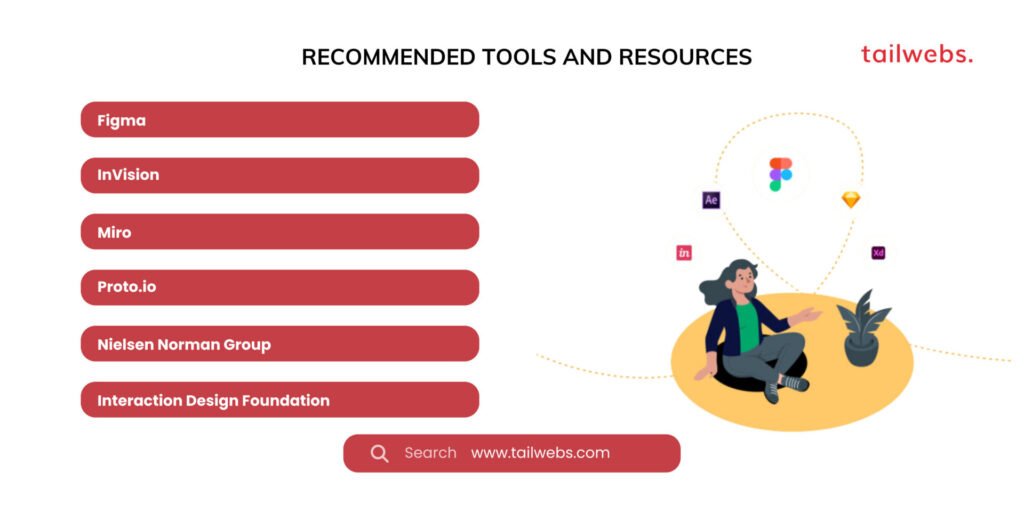
Call to Action:
- Share your favourite prototyping tools and tips in the comments below!
- Tell us about your biggest prototyping success story or challenging experience.
- Are you ready to embark on your own prototyping adventure? Let’s get inspired and start building together!

